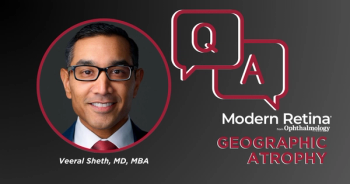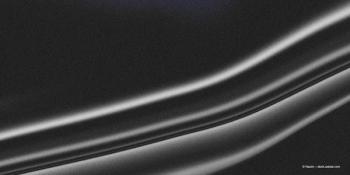
Plasma-free VEGF level decreases with aflibercept, bevacizumab
Compared with intravitreous ranibizumab, the decreases in the plasma-free VEGF levels were greater with intravitreous aflibercept and bevacizumab in patients with diabetic macular edema.
By Lynda Charters
Compared with intravitreous ranibizumab (Lucentis, Genentech), the decreases in the plasma-free vascular endothelial growth factor (VEGF) levels were greater with intravitreous aflibercept (Eylea, Regeneron Pharmaceuticals) and bevacizumab (Avastin, Genentech) in patients with diabetic macular edema (DME).
According to an analysis of patients in the Diabetic Retinopathy Clinical Research Network (DRCR.net) Protocol T study, it was indicated that greater decreases in VEGF-free plasma levels are seen with aflibercept and bevacizumab than with ranibizumab and that the VEGF plasma levels are unrelated to development of systemic complications.
A pre-planned secondary analysis included in Protocol T assessed the effect of aflibercept, bevacizumab, and ranibizumab on systemic-free VEGF-A levels and then compared the changes across the 3 treatments.
“This was done because these drugs are known to enter the systemic circulation to some extent and may have caused systemic side effects,” Lee M. Jampol, MD, said.
The investigators reported their results online in Ophthalmology (March 7, 2018). Dr. Jampol, the Louis Feinberg, MD, Professor of Ophthalmology, Northwestern University, Chicago, outlined the results.
The analysis also included an evaluation to identify a correlation between the plasma VEGF levels and key systemic factors.
Effects of treatments
The investigators collected plasma samples at baseline and then at 4 weeks and at 1 and 2 years before any ocular treatment was administered at the visits and the VEGF concentrations were measured. At 4 weeks, a total of 139, 130, and 141 samples were analyzed from patients who had been treated with aflibercept, bevacizumab, and ranibizumab, respectively, using a commercial immunoassay. The respective plasma VEGF concentrations at baseline were 28.50 pg/ml, 31.45 pg/ml, and 37.55 pg/ml.
“At the 4-week time point, there was virtually no change in the ranibizumab group (-0.02 pg/ml),” Dr. Jampol said. “However, in the aflibercept and bevacizumab groups, the respective decreases were -0.30 pg/ml and -0.31 pg/ml in the plasma VEGF levels.”
At the 1-year time point, 132, 115, and 130 samples of aflibercept, bevacizumab, and ranibizumab, were included. The investigators found little change in the free VEGF level in the ranibizumab group (-0.03 pg/ml).
In the aflibercept and bevacizumab groups, the plasma VEGF concentrations decreased (-0.10 pg/ml and -0.24 pg/ml, respectively). The difference between bevacizumab and ranibizumab reached significance (P < 0.001), which was also true at the 2-year time point, Dr. Jampol reported.
The investigators hypothesized about the timing of the injections. If the drug was cleared from the blood and the patient did not receive an injection for a certain period of time, the values might return to the normal level. “Indeed, that is what we found,” Dr. Jampol added.
With no injection administered within 1 month of the assay, at 1 year, the changes in the 3 VEGF levels were identical, Dr. Jampol pointed out. In eyes that had been treated within 1 month, the ranibizumab group had the smallest decrease and performed better than the other 2 drugs. In eyes that had had no injection in 2 months, the same results were found.
Association outlined
The investigators recorded any adverse events, calculated the albumin-creatinine ratios from urine samples at baseline and 1 year, and measured the mean arterial pressure, Dr. Jampol explained.
At 1 year, a small number of adverse events occurred (non-fatal myocardial infarctions, non-fatal strokes, and any Antiplatelet Trialists’ Collaboration event). No significant difference was seen among the 3 drugs regarding the numbers of adverse events. In addition, no relationships were seen among the VEGF levels and the mean arterial pressure.
However, an interesting finding regarding proteinuria might result in a change in some practices, Dr. Jambol pointed out.
“When we analyzed the urine samples in the study patients, we found no proteinuria in about one third of patients, microalbuminuria in about one third of patients, and very surprisingly, macroalbuminuria in about one third of patients,” Dr. Jampol said. “This suggests that we should be paying attention to the kidneys as the patients are being treated for diabetic macular edema.”
However, no difference was seen among the 3 drugs.
Study limitations
The study limitations included measurements obtained at only 4 points; the blood levels of the drugs were not measured; the assay might have interfered with the results and the drugs clear at different rates; and protocol T was not designed or powered to study systemic complications.
“At 4 weeks, the decreases in the VEGF levels were greater with aflibercept and bevacizumab compared with ranibizumab,” Dr. Jampol reported. “This remained true for bevacizumab at 1 and 2 years but not for aflibercept.
“In the pre-specified subgroups that did not receive an injection within 1 or 2 months before the 1-year time point, no differences in the VEGF levels were seen among the drugs,” he added. “In patients treated within 1 or 2 months before the 1-year visit, the VEGF decreases were less with ranibizumab than the other drugs.
Finally, Dr. Jampol noted that no data suggested that the VEGF plasma levels are related to the development of systemic complications. In the literature, there is little suggestion that plasma or serum levels are related to systemic adverse events.
Lee M. Jampol, MD
This article was adapted from a presentation that Dr. Jampol delivered at the Retina Subspecialty Day held prior to the 2017 American Academy of Ophthalmology. Dr. Jampol has no financial interest in any aspect of this report.
Newsletter
Keep your retina practice on the forefront—subscribe for expert analysis and emerging trends in retinal disease management.













































